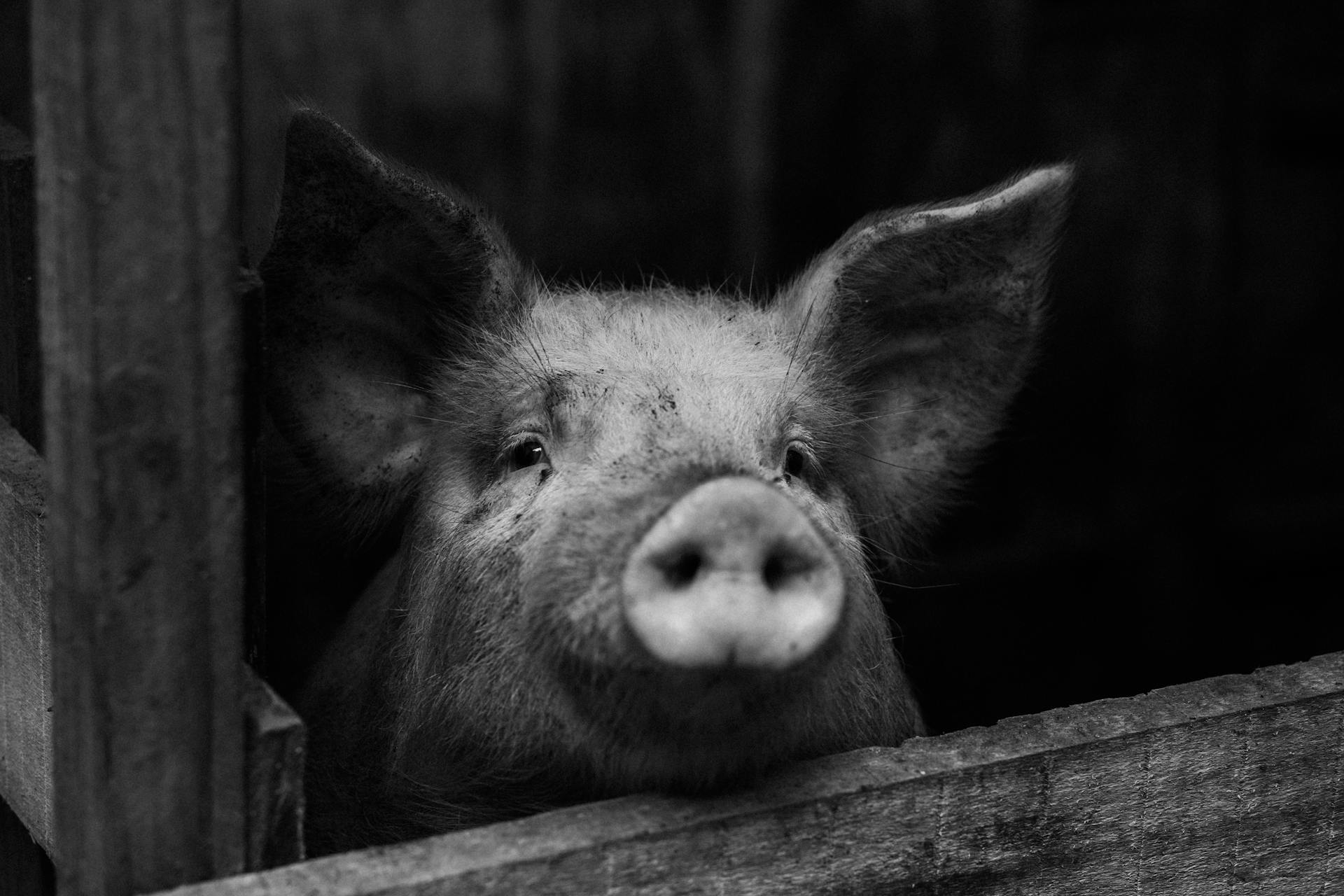
Ear cropping, a surgical procedure that's been practiced for centuries, is still a topic of debate among dog owners and veterinarians. In some breeds, ear cropping is considered essential for the dog's health and appearance.
The procedure typically involves removing a portion of the dog's ear flaps to prevent injuries and infections, as seen in breeds like the Doberman Pinscher and German Shepherd.
Ear cropping can also be done for cosmetic reasons, as some owners believe it enhances their dog's appearance. However, this is not supported by scientific evidence.
Reasons for Ear Cropping
Some hunting dogs were cropped to prevent their prey from getting ahold of the dog through an easy purchase point.
Guardian breeds for livestock were also thought to benefit from this, preventing wolves and coyotes from getting an easy hold on the dog.
Dogs with ear injuries can attest that ears bleed like stuck pigs and are a common location for damage, especially in dog fights.
For Protection
Cropping a guard dog's ears increases their intimidation factor, making them more reminiscent of wolves.
This intimidating appearance can serve as a deterrent to potential threats.
Legal and Ethical Considerations
Ear cropping is now considered an elective and cosmetic procedure, not necessary for any practical reason. Many countries and breed associations have banned the surgery, including Germany, where it likely originated.
The American Veterinary Medical Association (AVMA) does not support ear cropping when pursued solely for cosmetic purposes due to the unnecessary risk to the animal. The AVMA also opposes tail docking for the same reason.
In the US and most of Canada, ear cropping remains legal, despite legal battles in several states to outlaw the practice. However, it's crucial to consider the risks involved, including infection, possible loss of the entire ear, or even death.
Legal Considerations
Ear cropping is a surgery and should only be performed by a qualified veterinarian. Sometimes the procedure is performed at home with no more than a pair of scissors while the animal is forcibly held down, which is painful, cruel, and can have catastrophic consequences.
The American Veterinary Medical Association (AVMA) opposes the practice when it is pursued solely for cosmetic reasons. Many countries and breed associations have banned the surgery.
Even in Germany, where several of the most popularly cropped breeds and the practice likely originated, it has been banned. It remains legal in the US and the majority of Canada, despite legal battles in several states to outlaw the practice.
The American Kennel Club and Canadian Kennel Club support the practice and allow registration and showing of cropped dogs. However, the AVMA does not support the practice or that of tail docking when pursued strictly for cosmetic purposes.
Ear cropping is considered an elective and cosmetic procedure, not necessary for the health or well-being of the dog.
Related reading: Bulldog Ear Cropping
Why People Abuse Dogs
People crop a dog's ears for reasons that have been proven false. They might think it's to prevent ear infections, but that's not the case.
Some people believe that cropping a dog's ears makes them look more aggressive or intimidating, but that's not true either.
There are a few reasons why someone might choose to crop a dog's ears, but none of them are valid.
It's actually a cosmetic procedure that's been done for centuries, but it's not based on any scientific evidence.
In fact, many veterinarians and animal welfare organizations consider ear cropping to be a form of animal abuse.
Ear Cropping Procedures and Risks
Ear cropping procedures are typically performed when a puppy is between 7 and 12 weeks old, as this age is considered ideal for minimal pain and recovery.
The procedure involves removing about 2/3 of the ear flap, which is then closed with sutures, and the ears are bandaged to heal into the desired shape.
General anesthesia is used to ensure the puppy doesn't feel anything during the procedure, but postoperative pain can be severe and may require pain medication.
Explore further: Doberman Pinscher Ear Cropping Styles
Dogs that undergo ear cropping can be exposed to the risk of contracting fatal diseases like parvovirus or distemper, as they may not be fully vaccinated at the time of the procedure.
Ear cropping can also have psychological and social effects on a puppy, as their ears play a significant role in communication, and erect, cropped ears can be misinterpreted as aggressive body language.
Tail Docking Procedures
Tail docking procedures are a thing of the past, but it's essential to understand the history and facts surrounding this outdated practice.
The modern equivalent of tail docking is considered elective surgery, just like ear cropping.
It's performed on puppies between 7 and 12 weeks of age, and doing it at an older age can make the process more painful for the dog.
The procedure is usually not necessary, and it's essential to consider the potential risks and discomfort for the puppy.
You might like: Tail Docking Ear Cropping
Complications
Ear cropping procedures can be complicated, and it's essential to be aware of the potential risks. An allergic reaction to anesthesia is possible, and in severe cases, it can be fatal.
Dogs are often exposed to fatal diseases like parvovirus or distemper during ear cropping procedures because they're not yet vaccinated. This is a significant concern for pet owners.
Ear cropping can also affect a puppy's behavior and social interactions. Dogs use their ears to communicate, and cropped ears can be misinterpreted as aggressive body language.
This can lead to more fights and injuries for the dog, increasing the need for veterinary care. It's crucial to consider these potential complications before deciding on ear cropping.
A neuroma, a thickened and painful lesion, can develop in the area where the tail was docked. This is another potential complication to be aware of.
Dogs with Hanging Tongue More Prone to Infections
Dogs with hanging ears are more likely to get ear infections, with an incidence of 13% to 14% compared to 5% in dogs with erect ears.
The breeds most prone to ear infections are cocker spaniels, poodles, and German shepherds, regardless of ear type.
A hanging ear can increase humidity in the ear canal, promoting the development of infection originating from a skin disorder or irritant.
In some cases, ear infections can become chronic, require surgical treatment, and even lead to disfigurement and fatal complications.
Veterinary Services and Expert Opinions
Some veterinarians still offer ear cropping services, but it's essential to do your research and consult with a veterinarian who can provide guidance on the procedure.
Any surgery, including ear cropping, is painful for animals, and proper veterinary care can help mitigate this and the risk for infection.
You can talk to your veterinarian or seek a few opinions beforehand to get a better understanding of the pros and cons, risks, and aftercare involved in ear cropping.
Some veterinarians, like those at Tier 1, are happy to discuss the procedure with you and evaluate your puppy for surgery.
History and Cultural Significance
The practice of ear cropping dates back to around 2,000 years ago, with the Romans performing it for various reasons, including dogfighting and bear-baiting.
The Romans also believed that tail docking would decrease the spread of rabies, but it doesn't. This misconception has been debunked over time.
Ear cropping was originally intended to help working dogs, like certain breeds of shepherds, by reducing the risk of injury to their ears when engaging with predators like wolves.
Some 300 years ago, ear cropping was mentioned in texts as a form of defense against wolves, often paired with spiked collars.
It's argued that droopy ears make it harder to keep the ear canal clean, which can lead to health risks like ear infections and hematomas.
Benefits and Drawbacks of Ear Cropping
Ear cropping has been a topic of debate in the dog world, and it's essential to consider both the benefits and drawbacks.
There have been no scientific studies that demonstrate any medical value for ear cropping.
Dogs with cropped ears are often viewed as being more aggressive, dominant, and less playful and attractive than the same breed in its natural state.
This perception could have significant implications for breed-specific legislation.
Some proponents of ear cropping claim it has hygienic benefits, but there's a lot of inconsistency regarding this supposed advantage.
Collies and Afghans, for example, have an even greater potential for ear hygiene problems than Dobermans, Rottweilers, or Boxers, yet they're not typically cropped.
If this caught your attention, see: Dogs Ears Cropped
Sources
Featured Images: pexels.com

